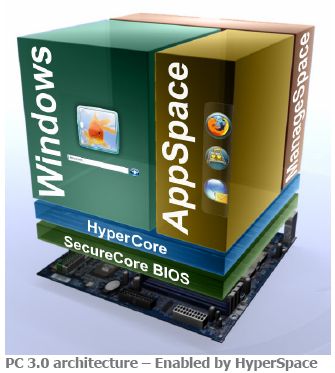Phoenix – Patent Idea Escaped – HyperCore
When we came across the embedded version of ESXi in Cannes, but then discovered that it was a pen drive mounted on a USB slot inside the server, we imagined that it was possible to mount the hypervisor on BIOS or on a flash specially mounted on the motherboard and that it would be very useful to allow the peripherals directly connected on this plate to control both the hypervisor and the various Virtual Machines, as is done, for example, with a KVM (keyboard, video) switch when we want to switch mouse, keyboard and video from one server to another.
We therefore began to consider the possibility of patenting the solution and the prototype and to investigate the market to understand how attractive it could be. Subsequently, we evaluated at an international level who could design and prototype any changes or additions to be made on the motherboard of common notebooks.
While we were only thinking about how to move on the merits………….
At the beginning of September version 3.3 of Xen (xen.org) was released and one of the features of version 3.4 of xen will be the following:
XCI (Xen Client Initiative)
– Client device virt (e.g. battery status etc)
– GPU virtualization with Gallium
– USB 2.0 support, PV USB support
– HID Trusted
– Simple VGA/text-mode management console
That is, working on a whole series of functions capable of virtualizing the resources most linked to the client machine, and managed directly by the directly connected peripherals (monitor, mouse, keyboard) in this specific case and most important the GPU virtualization, i.e. the virtualization of the video card.
So far we have been used to managing our hypervisors remotely and managing VMs even remotely, the Xen Client Initiative will make us change the way we think and operate, see for example this video showing a xen version mounted on arm processors:
Secure Xen on the ARM 9 Processor
Several companies such as phoenix are working, and have produced, bioses containing the Xen hypervisor and therefore capable of running different applications on the same PC or notebook at the same time as the main operating system, the purpose of these new notebooks is to allow you to turn on the notebook and immediately open the mail or surf the internet without having to wait for the slow loading of the complete operating system.
In short, our idea is certainly more complex and useful than phoenix, but only phoenix with the necessary experience and resources can proceed in this new field of virtualization where chip redesigns (BIOS, GPU, etc.) are essential.

